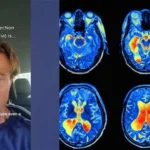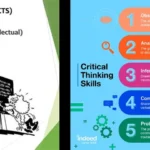What Are the Six Critical Thinking Steps? Mastering the Art of Analytical Reasoning in Six Simple Steps:Are you tired of feeling overwhelmed by complex problems and unsure of how to approach them? Do you wish you had a clear roadmap to guide your thinking process? Look no further! In this blog post, we will unveil the six critical thinking steps that will help you master the art of analytical reasoning. From organizing information to communicating your conclusions, these steps are the key to unlocking your problem-solving potential. So, get ready to sharpen your mind and delve into the world of critical thinking techniques. Let’s dive in!
Mastering the Art of Critical Thinking: A Step-by-Step Guide
Critical thinking is an invaluable skill that allows individuals to approach problems logically and come up with well-thought-out solutions. This process is not just about thinking harder; it’s about thinking better. It involves being able to objectively analyze information, draw conclusions without influence from personal biases, and communicate effectively. Let’s delve into the six critical steps of thinking, critical thinking skills, guidelines, and stages, and how they interrelate to form the foundation of a sound critical thinking process.
Step 1: Organize Information
Identifying Biases and Judging Relevance
The first step in critical thinking is to organize the information at hand. This involves sorting through data, identifying what’s relevant, and recognizing biases. Strong organization skills enable you to create a clear picture of the problem before attempting to solve it. By acknowledging your own biases, you ensure that your organization of information is not colored by preconceptions.
Knowledge and the Unreflective Thinker
At this initial stage, thinkers are often ‘unreflective’, meaning they may not be aware of the flaws in their thought process. Knowledge is the foundational guideline that corresponds to this step. Gathering and organizing knowledge systematically is crucial to advance to the next stage of critical thinking.
Step 2: Structure Reasoning
Inference and Application
Once information is organized, structuring reasoning becomes critical. This involves drawing inferences or logical conclusions from the organized data. Application, as one of the critical thinking guidelines, refers to the practical use of the information and reasoning to address the problem at hand. Structuring reasoning is about creating a logical framework for your argument or solution.
The Challenged Thinker Stage
At the ‘challenged thinker’ stage, individuals become aware of the need for structured reasoning but may still struggle to apply it effectively. It’s a learning phase where the thinker starts to recognize the importance of structured logic.
Step 3: Consider Evidence
Research and Analysis
Considering evidence involves a deep dive into research, looking for data that supports or refutes your inferences. This step is about analyzing the evidence critically and applying the guideline of ‘analyze’ to break down the information into manageable parts. This is where critical thinking skill of analysis becomes indispensable.
The Beginning Thinker Stage
As a ‘beginning thinker,’ you start to realize the importance of evidence in strengthening your arguments. You actively seek out information that will either support or challenge your current understanding.
Step 4: Identify Assumptions
Curiosity and Synthesis
Identifying assumptions is pivotal as it involves recognizing the underlying premises that may not be immediately obvious. Curiosity drives this exploration of assumptions. Synthesis, which is the combination of ideas to form a theory, is the guideline that complements this step, as it involves integrating different pieces of information, including assumptions, to create a cohesive argument.
Practicing Thinker Stage
As a ‘practicing thinker,’ you become more deliberate in identifying and questioning assumptions. This stage reflects growth in the ability to synthesize complex information.
Step 5: Evaluate Arguments
Identification and Take Action
Evaluating arguments is the process of critically analyzing reasoning to determine its validity. This requires the skill of identification to recognize the strengths and weaknesses of various arguments. ‘Take action’ is the corresponding guideline, as this step often leads to deciding on the best course of action based on the evaluation.
The Advanced Thinker Stage
As an ‘advanced thinker,’ you have honed your ability to evaluate arguments effectively, leading to more sophisticated decision-making processes.
Step 6: Communicate Conclusion
Open-Mindedness and Master Thinker
Finally, communicating your conclusion effectively is a critical component of the thinking process. It requires open-mindedness to present your findings in a balanced manner, considering counterarguments and alternative perspectives. Master thinkers excel at communication, articulating their conclusions with clarity and confidence.
7 Steps to Critical Thinking: A Comparative Look
When compared with the seven steps to critical thinking, we see an overlap and a deeper expansion of the concepts discussed. Identifying the problem, researching, determining data relevance, asking questions, identifying the best solution, presenting it, and analyzing the decision, all find their place within the six critical thinking steps and stages outlined.
5 Critical Thinking Techniques: The Supporting Pillars
Analysis, interpretation, inference, explanation, self-regulation, open-mindedness, and problem-solving are the key techniques that bolster each step of critical thinking. These techniques are not standalone; they are interwoven throughout the six steps, enhancing each stage of the thinking process.
By integrating the six critical thinking steps with their corresponding skills, guidelines, and stages, we create a comprehensive framework for effective problem-solving. This framework is not just theoretical; it demands practical application and continuous improvement as we evolve from unreflective to master thinkers.
Conclusion
The journey through the six critical thinking steps is one of evolving sophistication. By organizing information, structuring reasoning, considering evidence, identifying assumptions, evaluating arguments, and communicating conclusions, we refine our thinking skills and progress through the stages of unreflective to master thinking. The interplay between these steps, skills, guidelines, and techniques forms a robust scaffold for any individual aiming to enhance their ability to think critically and tackle challenges with adeptness.
Whether we’re facing complex work problems, making personal decisions, or engaging in social debates, critical thinking is an essential tool. It empowers us to cut through noise and bias, arrive at substantiated conclusions, and articulate our thoughts with clarity and persuasion. As we continue to navigate a world brimming with information and divergent viewpoints, honing our critical thinking skills becomes not just advantageous, but imperative.
FAQ & Common Questions about Critical Thinking Steps
Q: What are the six critical thinking steps?
A: The six critical thinking steps are: identifying the problem, conducting research, determining data relevance, asking questions, identifying the best solution, presenting the solution, and analyzing the decision.
Q: What are some critical thinking techniques?
A: Some critical thinking techniques include analysis, interpretation, inference, explanation, self-regulation, open-mindedness, and problem-solving.
Q: What are the higher order thinking cognitive objectives?
A: The higher order thinking cognitive objectives, also known as HOTS, include synthesizing, analyzing, reasoning, comprehending, application, and evaluation.
Q: How many steps are there in critical thinking?
A: There are seven steps in critical thinking.
Q: Can you list the seven steps of critical thinking?
A: The seven steps of critical thinking are: identifying the problem, conducting research, determining data relevance, asking questions, identifying the best solution, presenting the solution, and analyzing the decision.





